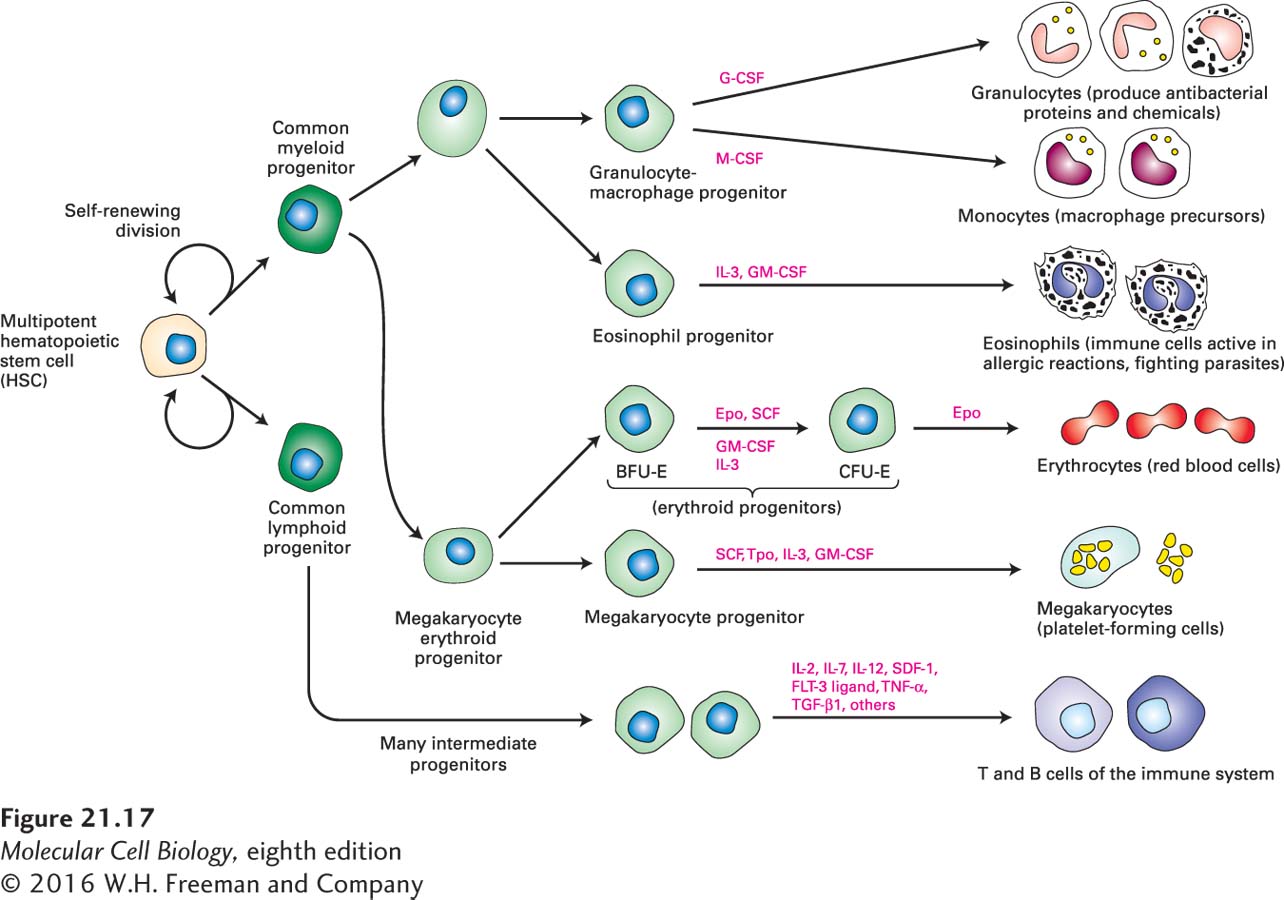
FIGURE 21- 17 Formation of blood cells from hematopoietic stem cells in the bone marrow. Multipotent hematopoietic stem cells may divide symmetrically to increase the numbers of stem cells. In adults, they generally divide asymmetrically to form one daughter cell that is multipotent, like the parent stem cell, and another daughter cell with a more restricted fate. Ultimately, this daughter cell generates either common lymphoid progenitors or common myeloid progenitors; although these multipotent cells are capable of limited self- renewal, they are committed to one of the two major hematopoietic lineages. Depending on the types and amounts of cytokines present, the common lymphoid and common myeloid progenitors undergo rapid rounds of cell division and generate different types of progenitor cells (light green). These progenitors are either multipotent or unipotent in that they can give rise to several types or only a single type of differentiated blood cells, respectively; they respond to one or a few specific cytokines. Some of the cytokines that support this process are indicated (pink labels). CSF = colony- stimulating factor; IL = interleukin; SCF = stem- cell factor; Epo = erythropoietin; Tpo = thrombopoietin. See M. Socolovsky et al., 1998, Proc. Natl. Acad. Sci. USA 95:6573, and N. Noverstern et al., 2011, Cell 144:296.
[Leave] [Close]